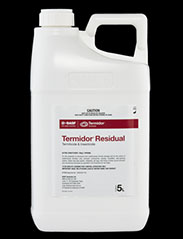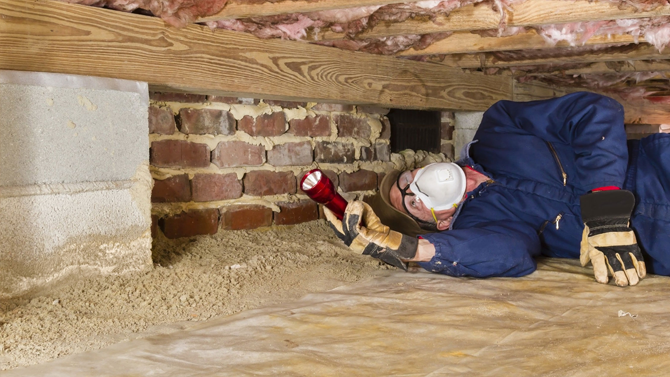With the rising cost of living, and the increased popularity of DIY termite treatment kits – which you can easily purchase online and in stores – many people have taken an interest in doing their own termite treatment at home.
This raises a lot of interesting questions. Do these treatment kits really work? Can they help you save time and money? And, most importantly, are they better than the results a licensed pest controller can achieve?
Let’s take a closer look at the differences between each of these approaches, and which one is the right choice for you.
Termite Treatments Explained
Many online stores and physical stores sell a range of termite treatments. The most common treatments are liquid termiticides and termite baiting stations. You can either choose one treatment or a combination of both for maximum effectiveness.
As you’ll soon discover, the products you can buy online aren’t the same as what the pros use. On top of this, you need to know how to correctly apply these products. Otherwise, you may not get the desired results.
Let’s compare the DIY vs professional approach with the most common termite treatments:
Liquid Termiticide
 Made from chemicals that are toxic to termites. The foam solution is applied beneath the soil around the perimeter of the property, establishing a secure termite barrier designed to prevent termites from entering the building.
Made from chemicals that are toxic to termites. The foam solution is applied beneath the soil around the perimeter of the property, establishing a secure termite barrier designed to prevent termites from entering the building.
Industry-grade termiticide is generally more powerful than consumer-grade alternatives. The solution is also designed to be invisible to termites, so that they will willingly enter the barrier and become infected.
Some consumer-grade liquid termiticide don’t have this feature. So the termites are more likely to detect the barrier and work their way around it to gain access to the building.
Termite Baiting Stations
 Another effective form of termite treatment. These are enclosed containers made out of materials that are enticing to termites, which encourages the termites to enter the baiting station and consume the bait.
Another effective form of termite treatment. These are enclosed containers made out of materials that are enticing to termites, which encourages the termites to enter the baiting station and consume the bait.
Once the bait is consumed, the infected termites return to the nest and infects the remaining colony, including the Queen.
Termite baiting stations are usually installed deep in the soil around the perimeter of the building.
Knowing where to install these baiting stations is crucial to getting the best results. If you place the baiting stations in the wrong spot, not only will the termites ignore the treatment, this will also inadvertently give the termites more time to feed on your premise and cause serious damage.
For safe and reliable termite treatment, contact All Bugs today.
Risks of DIY Termite Control
There are many reasons why it’s not recommended to carry out your own termite treatment.
Let’s break each of the following reasons in greater detail.
Increased Guesswork
There are near limitless ways termites can enter your building. They can enter through a sewer pipe, cracks or crevices in the building, timber products leaning against the property, and even nearby trees.
Unless you can identify exactly where the termites are located, how they are getting inside, and where they are going; you’re going to have a hard time knowing where to apply the right treatments.
As a result, not only will this cause you frustration, but also give the termites more time to cause serious damage to your property.
More Expensive
![]() Yes, you read that right.
Yes, you read that right.
Despite the fact that DIY pest control enthusiasts boast about saving you money, this is never a guarantee.
As you read in the previous section, the more time you spend on implementing termite treatment yourself, this gives the termites more time to feed on your property.
What does this mean for you? Even if you did save money on labour costs, that money will instead go to building repairs, which you could have avoided if you hired an expert in the first place.
Furthermore, the more termites enter your property, the more expensive it will be for a professional to put in place their own treatment plan.
Increased Risk of Causing Panic
Termites are highly sensitive to the presence of others. If you have termites in your home, and you accidentally breach a wall where a high level of termites are located, you’re in trouble.
Why? Because the termites will panic and relocate to other parts of the building. They will also bang their heads against the wall to alert the rest of the colony to relocate. As a result, not only will the termites move elsewhere, they will establish a new nest somewhere else too.
You know what this means, right? The harder it is to locate the termites, the more expensive it’ll be to resolve the problem.
Increased Health And Safety Risks
 Although termite treatment has made leaps and strides to be more eco-friendly to people and other animals, they are still chemical-based products and should be used in a safe and careful manner.
Although termite treatment has made leaps and strides to be more eco-friendly to people and other animals, they are still chemical-based products and should be used in a safe and careful manner.
The use of termite treatment technology requires specialist knowledge. That’s why licensed pest controllers go through rigorous training in order to be qualified to correctly use liquid termiticide and baiting stations. Furthermore, they also go through follow-up training to keep their skills and knowledge sharp.
Without the right knowledge of the latest products, you could put yourself at risk of exposure to harmful chemicals. For this reason, it’s always a good idea to leave the job to the professionals.
Benefits of Professional Pest Control
These are just some of the many reasons why DIY termite treatment is not recommended. However, there are other benefits to hiring a licensed pest controller, such as:
Peace of Mind
Termite treatments carried out by a licensed pest controller are covered by a workmanship guarantee for a minimum of 5 to 7 years. If you do the treatment yourself, you have no such guarantee it will work.
Increased Efficiency
By taking guesswork out of the equation, this will ensure the treatment is more effective. A licensed pest controller will know how to track down entry points, areas of high activity, and the location of nests. With this information, they can put in place a treatment plan that will get results.
Save Time and Money
Without having to do the job yourself, you can reclaim your weekends again. No need to check the soil barriers. No need to refill the termite baiting stations. Instead, you can do the things you actually want to do.
Longer Lasting Results
DIY termite treatment is often limited to short-term results. For instance, that termite baiting station may have killed a few termites, but did you confirm that it eliminated the colony? Licensed pest controllers monitor their treatments and continue to make improvements to achieve the best results.
Don’t put your livelihood at risk with DIY termite treatment. Contact All Bugs today, and one of our licensed experts will provide safe and effective treatment.



Leave a Reply